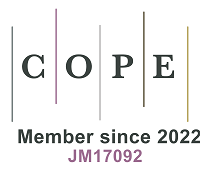REFERENCES
1. Office on Smoking and Health (US). The health consequences of involuntary exposure to tobacco smoke: a report of the surgeon general. Atlanta (GA): Centers for Disease Control and Prevention (US); 2006.
2. Agaku IT, Odani S, King BA, Armour BS. Prevalence and correlates of secondhand smoke exposure in the home and in a vehicle among youth in the United States. Prev Med 2019;126:105745.
3. Jacob P 3rd, Benowitz NL, Destaillats H, et al. Thirdhand smoke: new evidence, challenges, and future directions. Chem Res Toxicol 2017;30:270-94.
4. Arfaeinia H, Ghaemi M, Jahantigh A, Soleimani F, Hashemi H. Secondhand and thirdhand smoke: a review on chemical contents, exposure routes, and protective strategies. Environ Sci Pollut Res Int 2023;30:78017-29.
5. Díez-Izquierdo A, Cassanello-Peñarroya P, Lidón-Moyano C, Matilla-Santander N, Balaguer A, Martínez-Sánchez JM. Update on thirdhand smoke: a comprehensive systematic review. Environ Res 2018;167:341-71.
6. Matt GE, Quintana PJ, Hovell MF, et al. Households contaminated by environmental tobacco smoke: sources of infant exposures. Tob Control 2004;13:29-37.
7. Kelley ST, Liu W, Quintana PJE, et al. Altered microbiomes in thirdhand smoke-exposed children and their home environments. Pediatr Res 2021;90:1153-60.
8. Matt GE, Quintana PJ, Zakarian JM, et al. When smokers move out and non-smokers move in: residential thirdhand smoke pollution and exposure. Tob Control 2011;20:e1.
9. Matt GE, Quintana PJE, Hoh E, et al. Persistent tobacco smoke residue in multiunit housing: Legacy of permissive indoor smoking policies and challenges in the implementation of smoking bans. Prev Med Rep 2020;18:101088.
10. Matt GE, Quintana PJE, Zakarian JM, et al. When smokers quit: exposure to nicotine and carcinogens persists from thirdhand smoke pollution. Tob Control 2017;26:548-56.
11. Pozuelos GL, Jacob P 3rd, Schick SF, Omaiye EE, Talbot P. Adhesion and removal of thirdhand smoke from indoor fabrics: a method for rapid assessment and identification of chemical repositories. Int J Environ Res Public Health 2021;18:3592.
12. Tang X, Benowitz N, Gundel L, et al. Thirdhand exposures to tobacco-specific nitrosamines through inhalation, dust ingestion, dermal uptake, and epidermal chemistry. Environ Sci Technol 2022;56:12506-16.
13. Hoh E, Hunt RN, Quintana PJE, et al. Environmental tobacco smoke as a source of polycyclic aromatic hydrocarbons in settled household dust. Environ Sci Technol 2012;46:4174-83.
14. Schick SF, Farraro KF, Perrino C, et al. Thirdhand cigarette smoke in an experimental chamber: evidence of surface deposition of nicotine, nitrosamines and polycyclic aromatic hydrocarbons and de novo formation of NNK. Tob Control 2014;23:152-9.
15. Matt GE, Greiner L, Record RA, et al. Policy-relevant differences between secondhand and thirdhand smoke: strengthening protections from involuntary exposure to tobacco smoke pollutants. Tob Control 2023:1-9.
16. Matt GE, Quintana PJE, Hoh E, et al. Tobacco smoke is a likely source of lead and cadmium in settled house dust. J Trace Elem Med Biol 2021;63:126656.
17. US EPA. Child-Specific Exposure Factors Handbook (2008, Final Report). U.S. Environmental Protection Agency, Washington, DC, EPA/600/R-06/096F, 2008. Available from: https://cfpub.epa.gov/ncea/risk/recordisplay.cfm?deid=199243 [Last accessed on 8 Nov 2023].
18. Apelberg BJ, Hepp LM, Avila-tang E, et al. Environmental monitoring of secondhand smoke exposure. Tob Control 2013;22:147-55.
19. Hammond SK, Leaderer BP. A diffusion monitor to measure exposure to passive smoking. Environ Sci Technol 1987;21:494-7.
20. Matt GE, Quintana PJE, Hoh E, et al. A Casino goes smoke free: a longitudinal study of secondhand and thirdhand smoke pollution and exposure. Tob Control 2018;27:643-9.
21. Jacob P 3rd, Havel C, Lee DH, Yu L, Eisner MD, Benowitz NL. Subpicogram per milliliter determination of the tobacco-specific carcinogen metabolite 4-(methylnitrosamino)-1-(3-pyridyl)-1-butanol in human urine using liquid chromatography-tandem mass spectrometry. Anal Chem 2008;80:8115-21.
22. Continente X, Henderson E, López-González L, et al. TackSHS Project Investigators. Exposure to secondhand and thirdhand smoke in private vehicles: Measurements in air and dust samples. Environ Res 2023;235:116681.
23. Matt GE, Quintana PJE, Hoh E, et al. Remediating thirdhand smoke pollution in multiunit housing: temporary reductions and the challenges of persistent reservoirs. Nicotine Tob Res 2021;23:364-72.
24. Quintana PJE, Matt GE, Chatfield D, Zakarian JM, Fortmann AL, Hoh E. Wipe sampling for nicotine as a marker of thirdhand tobacco smoke contamination on surfaces in homes, cars, and hotels. Nicotine Tob Res 2013;15:1555-63.
25. Matt GE, Hoh E, Quintana PJE, Zakarian JM, Arceo J. Cotton pillows: a novel field method for assessment of thirdhand smoke pollution. Environ Res 2019;168:206-10.
26. Mahabee-Gittens EM, Merianos AL, Jandarov RA, Quintana PJE, Hoh E, Matt GE. Differential associations of hand nicotine and urinary cotinine with children's exposure to tobacco smoke and clinical outcomes. Environ Res 2021;202:111722.
27. Mahabee-Gittens EM, Merianos AL, Stone L, et al. Hand nicotine as an independent marker of thirdhand smoke pollution in children's environments. Sci Total Environ 2022;849:157914.
28. Quintana PJE, Hoh E, Dodder NG, et al. Nicotine levels in silicone wristband samplers worn by children exposed to secondhand smoke and electronic cigarette vapor are highly correlated with child's urinary cotinine. J Expo Sci Environ Epidemiol 2019;29:733-41.
29. Quintana PJE, Lopez-Galvez N, Dodder NG, et al. Nicotine, cotinine, and tobacco-specific nitrosamines measured in children's silicone wristbands in relation to secondhand smoke and e-cigarette vapor exposure. Nicotine Tob Res 2021;23:592-9.
30. O'Connell SG, Kincl LD, Anderson KA. Silicone wristbands as personal passive samplers. Environ Sci Technol 2014;48:3327-35.
31. Mahabee-Gittens EM, Merianos AL, Hoh E, Quintana PJ, Matt GE. Nicotine on children's hands: limited protection of smoking bans and initial clinical findings. Tob Use Insights 2019;12:1179173X18823493.
32. Mahabee-Gittens EM, Merianos AL, Matt GE. Preliminary evidence that high levels of nicotine on children's hands may contribute to overall tobacco smoke exposure. Tob Control 2018;27:217-9.
33. Mahabee-Gittens EM, Quintana PJE, Hoh E, et al. Collecting Hand Wipe Samples to Assess Thirdhand Smoke Exposure. Front Public Health 2021;9:770505.
34. Jacob P 3rd, Yu L, Duan M, Ramos L, Yturralde O, Benowitz NL. Determination of the nicotine metabolites cotinine and trans-3'-hydroxycotinine in biologic fluids of smokers and non-smokers using liquid chromatography-tandem mass spectrometry: biomarkers for tobacco smoke exposure and for phenotyping cytochrome P450 2A6 activity. J Chromatogr B Analyt Technol Biomed Life Sci 2011;879:267-76.
35. Singer BC, Hodgson AT, Guevarra KS, Hawley EL, Nazaroff WW. Gas-phase organics in environmental tobacco smoke. 1. Effects of smoking rate, ventilation, and furnishing level on emission factors. Environ Sci Technol 2002;36:846-53.
36. Borujeni ET, Yaghmaian K, Naddafi K, Hassanvand MS, Naderi M. Identification and determination of the volatile organics of third-hand smoke from different cigarettes and clothing fabrics. J Environ Health Sci Eng 2022;20:53-63.
37. Sleiman M, Gundel LA, Pankow JF, Jacob P 3rd, Singer BC, Destaillats H. Formation of carcinogens indoors by surface-mediated reactions of nicotine with nitrous acid, leading to potential thirdhand smoke hazards. Proc Natl Acad Sci U S A 2010;107:6576-81.
38. Saini A, Okeme JO, Mark Parnis J, McQueen RH, Diamond ML. From air to clothing: characterizing the accumulation of semi-volatile organic compounds to fabrics in indoor environments. Indoor Air 2017;27:631-41.
39. Hood NE, Ferketich AK, Klein EG, Pirie P, Wewers ME. Associations between self-reported in-home smoking behaviours and surface nicotine concentrations in multiunit subsidised housing. Tob Control 2014;23:27-32.
40. Goniewicz ML, Eisner MD, Lazcano-Ponce E, et al. Comparison of urine cotinine and the tobacco-specific nitrosamine metabolite 4-(methylnitrosamino)-1-(3-pyridyl)-1-butanol (NNAL) and their ratio to discriminate active from passive smoking. Nicotine Tob Res 2011;13:202-8.







